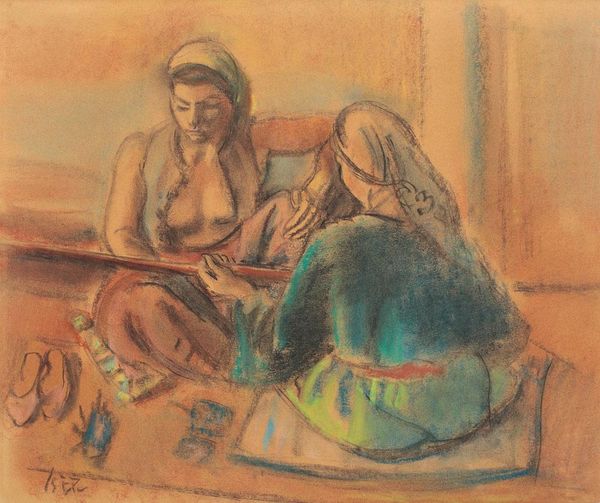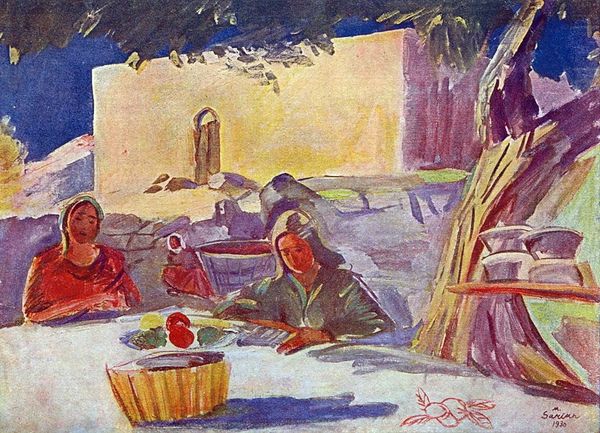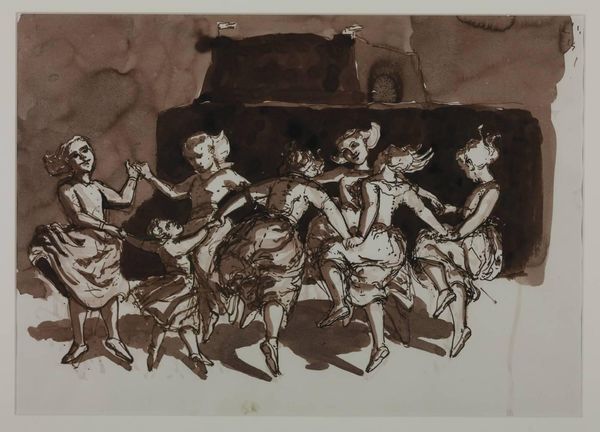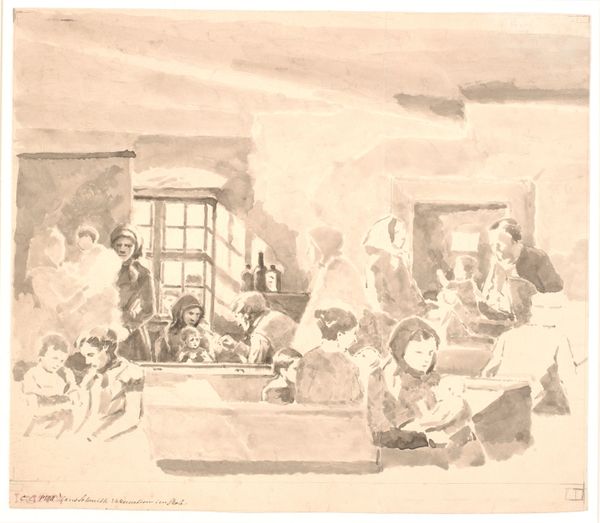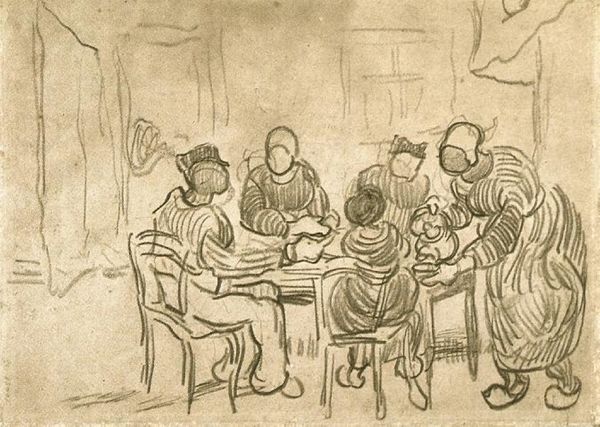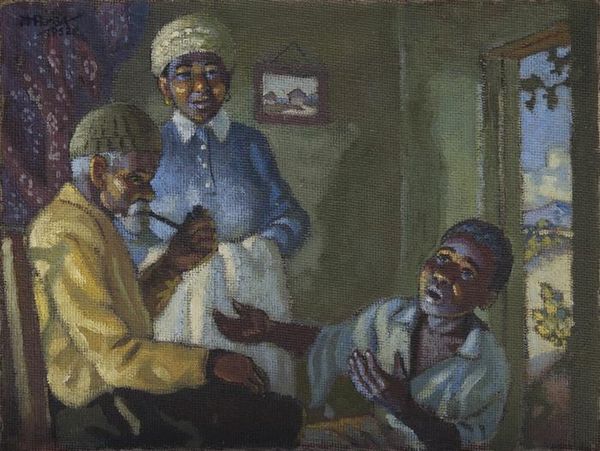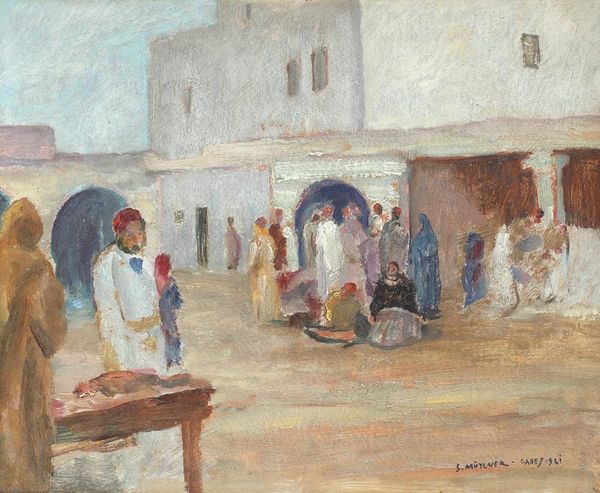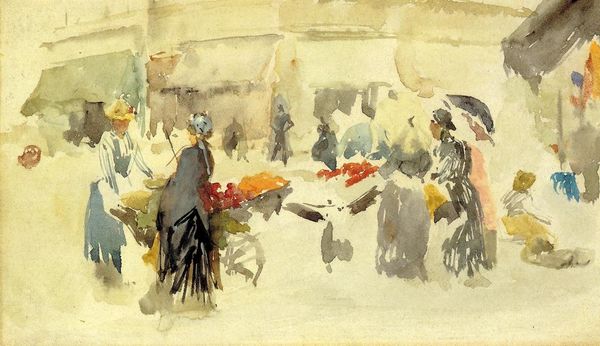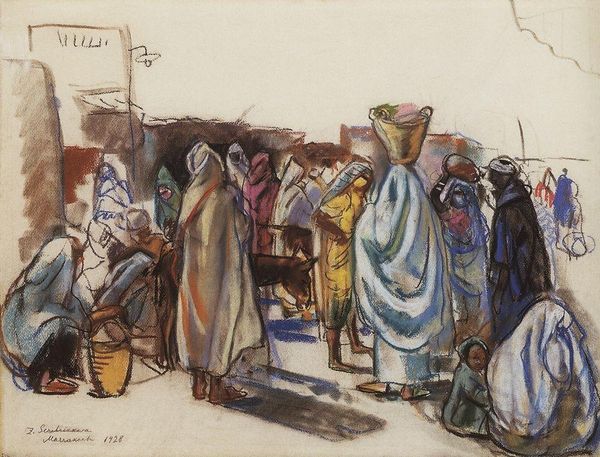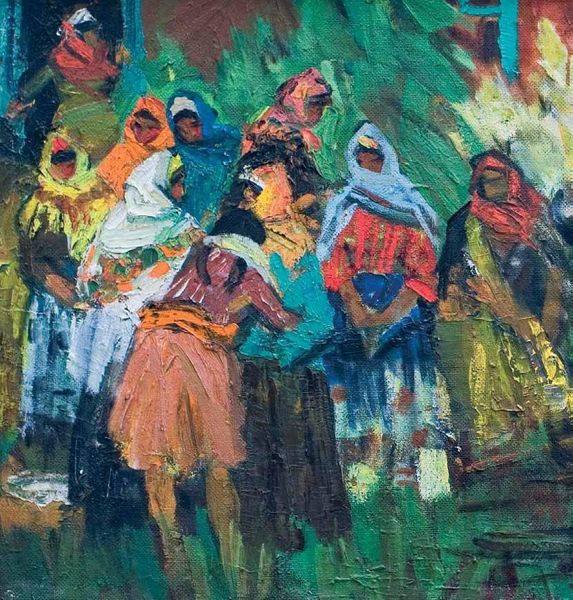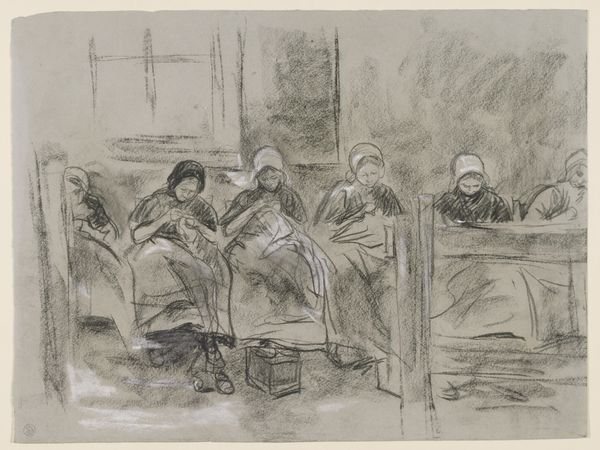
watercolor
#
portrait
#
soviet-nonconformist-art
#
watercolor
#
genre-painting
#
realism
Dimensions: 34.4 x 44.5 cm
Copyright: Pyotr Konchalovsky,Fair Use
Editor: Here we have Pyotr Konchalovsky's 1930 watercolor, "Bakhchisarai. Embroidery Carpet Cooperative." It depicts women working, maybe even producing textiles together? The mood is rather calm and domestic. What strikes you when you look at this work? Curator: The explicit naming of the cooperative is telling. The watercolor documents not only a scene of women working, but also the means of production: a socialist system replacing individual craftsmanship. We must ask, what materials are accessible, and what labor constructs this particular depiction of labor? Editor: That’s an interesting way to look at it. So, it’s less about the aesthetic quality of the artwork itself, and more about what the image says about the culture surrounding its creation? Curator: Precisely. Observe how the artist utilizes watercolor, typically associated with ‘high art’, to depict a collective engaged in what could be considered a 'craft' tradition. Is this a blurring of the lines between artistic creation and industrial manufacturing under a socialist agenda? The roughness of the watercolor reflects perhaps the rudimentary conditions and the raw materiality of their work? Editor: I see what you mean! By using watercolor to depict the carpet-making process, Konchalovsky elevates the labor itself while perhaps subtly acknowledging the humble origins and social context of the cooperative. Does the visible process, even in the image itself, become as significant as the final product? Curator: Exactly. The visible brushstrokes and the artist’s choices force us to question the boundaries of art, craft, and labor within a specific sociopolitical structure. Editor: This makes me think about all the labor that often goes unseen. It's like the painting unveils the materiality of both artmaking and carpet production. Curator: Right, and it underscores that all artworks—painting or carpet— are products of specific contexts. This close reading shows us the real power of looking beyond the surface. Editor: This conversation really helped to understand the significance of process, labor, and context in art analysis. Thanks so much!
Comments
No comments
Be the first to comment and join the conversation on the ultimate creative platform.
